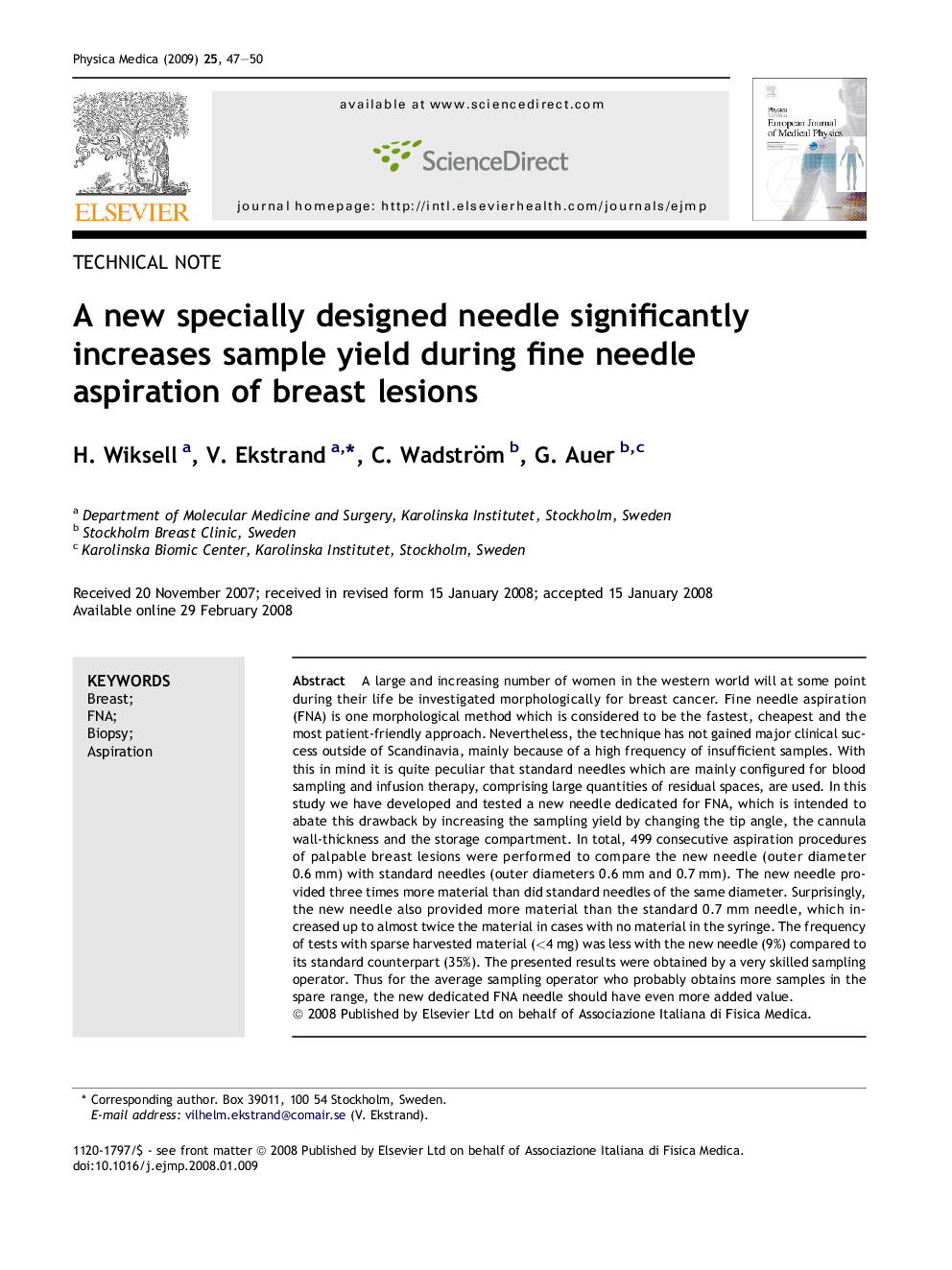| Article ID | Journal | Published Year | Pages | File Type |
|---|---|---|---|---|
| 1880954 | Physica Medica | 2009 | 4 Pages |
A large and increasing number of women in the western world will at some point during their life be investigated morphologically for breast cancer. Fine needle aspiration (FNA) is one morphological method which is considered to be the fastest, cheapest and the most patient-friendly approach. Nevertheless, the technique has not gained major clinical success outside of Scandinavia, mainly because of a high frequency of insufficient samples. With this in mind it is quite peculiar that standard needles which are mainly configured for blood sampling and infusion therapy, comprising large quantities of residual spaces, are used. In this study we have developed and tested a new needle dedicated for FNA, which is intended to abate this drawback by increasing the sampling yield by changing the tip angle, the cannula wall-thickness and the storage compartment. In total, 499 consecutive aspiration procedures of palpable breast lesions were performed to compare the new needle (outer diameter 0.6 mm) with standard needles (outer diameters 0.6 mm and 0.7 mm). The new needle provided three times more material than did standard needles of the same diameter. Surprisingly, the new needle also provided more material than the standard 0.7 mm needle, which increased up to almost twice the material in cases with no material in the syringe. The frequency of tests with sparse harvested material (<4 mg) was less with the new needle (9%) compared to its standard counterpart (35%). The presented results were obtained by a very skilled sampling operator. Thus for the average sampling operator who probably obtains more samples in the spare range, the new dedicated FNA needle should have even more added value.
